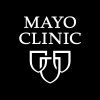
Assess the Safety and Efficacy of CT0594CP Cells in Relapsed/Refractory Multiple Myeloma or Plasma...
Relapsed and/or Refractory Multiple MyelomaPlasma Cell Leukemia in RelapseThis is an open-label, single arm study to evaluate the safety and tolerability of treatment with CT0594CP CAR-T Cells in patients with relapsed and/or refractory multiple myeloma or Plasma Cell Leukemia

A Study of Nemtabrutinib Plus Venetoclax vs Venetoclax + Rituximab (VR) in Second-line (2L) + Relapsed/Refractory...
LeukemiaLymphocytic9 moreThe purpose of this study is to assess the safety and tolerability and to confirm the dose of nemtabrutinib in combination with venetoclax in participants with R/R CLL/SLL. The primary study hypotheses are that the combination of nemtabrutinib plus venetoclax is superior to VR with respect to progression-free survival (PFS) per 2018 International Workshop on Chronic Lymphocytic Leukemia (iwCLL) criteria as assessed by blinded independent central review (BICR).

Clinical Study of Anti-CD56-CAR-T in the Treatment of Relapsed/Refractory NK/T Cell Lymphoma /NK...
Extranodal NK T Cell LymphomaNK-Cell LeukemiaTo evaluate the safety and efficacy of anti-CD56-CAR T in the treatment of relapsed refractory NK/T cell lymphoma /NK cell leukemia

A Study of GNC-035 in Relapsed or Refractory Chronic Lymphocytic Leukemia and Other Hematological...
Relapsed/Refractory Chronic Lymphocytic LeukemiaAn open-label, multicenter, phase Ib/II clinical trial was conducted to evaluate the safety, tolerability, pharmacokinetics/pharmacodynamics, and antitumor activity of GNC-035 quad-specific antibody injection in patients with relapsed or refractory chronic lymphocytic leukemia and other hematological malignancies

Mismatched Related Donor Versus Matched Unrelated Donor Stem Cell Transplantation for Children,...
Acute Lymphoblastic LeukemiaAcute Myeloid Leukemia1 moreThis phase III trial compares hematopoietic (stem) cell transplantation (HCT) using mismatched related donors (haploidentical [haplo]) versus matched unrelated donors (MUD) in treating children, adolescents, and young adults with acute leukemia or myelodysplastic syndrome (MDS). HCT is considered standard of care treatment for patients with high-risk acute leukemia and MDS. In HCT, patients are given very high doses of chemotherapy or radiation therapy, which is intended to kill cancer cells that may be resistant to more standard doses of chemotherapy; unfortunately, this also destroys the normal cells in the bone marrow, including stem cells. After the treatment, patients must have a healthy supply of stem cells reintroduced or transplanted. The transplanted cells then reestablish the blood cell production process in the bone marrow. The healthy stem cells may come from the blood or bone marrow of a related or unrelated donor. If patients do not have a matched related donor, doctors do not know what the next best donor choice is or if a haplo related donor or MUD is better. This trial may help researchers understand whether a haplo related donor or a MUD HCT for children with acute leukemia or MDS is better or if there is no difference at all.

Anti-FLT3 CAR-T Cell (TAA05 Cell Injection) in the Treatment of Relapsed / Refractory Acute Myeloid...
Acute Myeloid LeukemiaThis is a clinical trial of Anti-FLT3 CAR-T Cell (TAA05 Cell Injection) in the treatment of patients with relapsed / refractory acute myeloid leukemia. The purpose is to evaluate the safety and efficacy of anti-FLT3 CAR-T cells in patients with relapsed / refractory acute myeloid leukemia.

Clinical Study of TQB2618 Injection in Combination With Demethylation Drugs in Patients With Recurrent/Refractory...
Recurrent/Refractory Acute Myeloid LeukemiaMyelodysplastic SyndromesThis project is an open, dose escalation and expansion phase I clinical study. The first phase is a dose escalation study, and the second phase is a dose expansion study based on the Maximum tolerated dose (MTD) / Recommended Phase II Dose (RP2D) obtained in the first phase. The purpose is to evaluate the tolerability and initially evaluate the antitumor efficacy of TQB2618 injection combined with demethylation drugs in patients with recurrent/refractory acute myeloid leukemia, myelodysplastic syndromes.

A Study of Venetoclax in Combination With Chemotherapy to Treat Newly Diagnosed Acute Lymphoblastic...
Acute Lymphoblastic LeukemiaThe researchers are doing this study to find out whether combining venetoclax with several different standard chemotherapy drugs used to treat acute lymphoblastic leukemia (ALL) in children is safe and effective in adults with newly diagnosed ALL. Participants in this study will be under the age of 60, and they will have T- or B-cell ALL.

Acalabrutinib, Venetoclax and Durvalumab for the Treatment of Richter Transformation From Chronic...
Chronic Lymphocytic LeukemiaRichter Syndrome1 moreThis phase II trial tests whether acalabrutinib, venetoclax, and durvalumab work in treating patients with Richter transformation from chronic lymphocytic leukemia or small lymphocytic lymphoma. Richter transformation is a rare condition in which chronic lymphocytic leukemia or small lymphocytic lymphoma changes into a fast-growing type of lymphoma. Acalabrutinib may stop the growth of cancer cells by blocking some of the enzymes needed for cell growth. Venetoclax is in a class of medications called B-cell lymphoma-2 (BCL-2) inhibitors. It may stop the growth of cancer cells by blocking Bcl-2, a protein needed for cancer cell survival. Immunotherapy with monoclonal antibodies, such as durvalumab, may help the body's immune system attack the cancer, and may interfere with the ability of tumor cells to grow and spread. Giving acalabrutinib, venetoclax, and durvalumab may help improve survival in patients with Richter transformation.

Low Dose Vemurafenib and Rituximab in Hairy Cell Leukemia
Hairy Cell LeukemiaThe current standard-of-care for Hairy Cell Leukemia involves chemotherapy, with agents such as cladribine or pentostatin. Chemotherapy is associated with infection, low blood counts and predisposition to future cancers. This study tests a new drug combination for the treatment of hairy cell leukemia. The treatment involves 8 weeks of treatment with an oral drug called vemurafenib and 8 doses of an intravenous medication called rituximab. The goal of this study is to see whether this treatment is better tolerated and more effective than the currently used treatment in this disease. In addition, this study uses a lower dose of vemurafenib than previous studies have used, with the goal of minimizing side effects from this medication.
